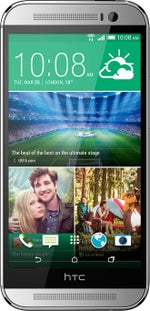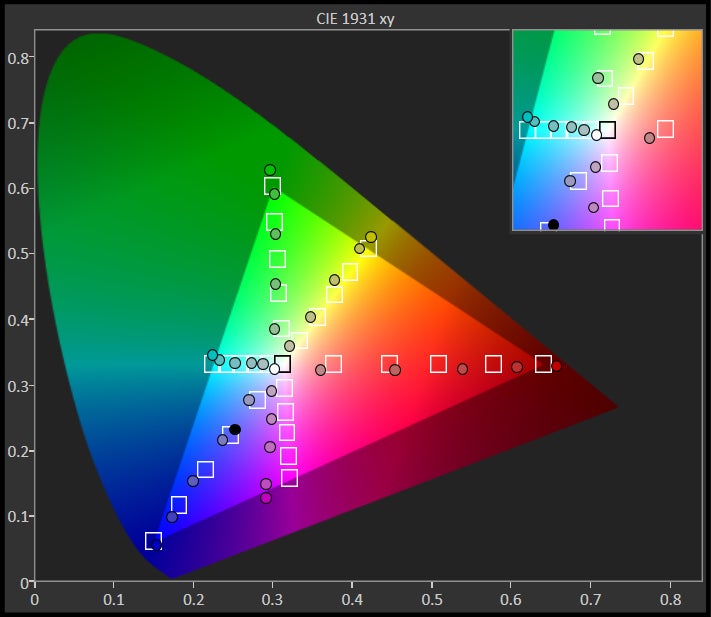HTC One (M8) vs Sony Xperia Z1S
Introduction
Now that Android smartphone manufacturers no longer have to be so focused on achieving a good level of performance or building a portfolio or unique software features, they can start thinking more about design and build quality – characteristics that are typically overlooked in the Android world, save for a few exceptions. One such exception is HTC – a company that has traditionally paid close attention to what its phones actually look like, as well as what they are made of. The Taiwanese have recently been joined by Sony – under their new CEO, Kazuo Hirai, the Japanese company's mobile division is going through a small renaissance of sorts, which is evident if you look at their recent offerings, such as the Xperia Z, Z1 (Z1S) and the Z2.
Introduced in the second half of last year, the Sony Xperia Z1S (US version of the Z1) offers an impressive exterior design that sets it apart from most other Androids. True, it's fairly big in comparison to most of its rivals, but it also has that valuable quality of feeling like an exquisite product. Just like the brand new HTC One (M8). Oh boy, so many awesome handsets, so little time to play with them all!
Anyway, let us not drift away in our SoC-powered thoughts, because we now have two very high-end smartphones to compare. Yes, the Z1S is a late-last-year model, but it's still more than capable in each and every respect. And with it being quite a popular smartphone, it'll surely be interesting to see if the new One (M8) by HTC can outdo it!
Design
In this fight of metal versus glass, there can be not just one, but two winners.
This is one of the areas where both the HTC One (M8) and Sony Xperia Z1S hope to captivate consumers the most. Yes, they are both very ambitious in the design department, but interestingly, they have gone down two completely different paths, when it comes to appearance and construction.
First on the line is the One (M8), which mostly stays true to its predecessor's aluminum body. However, the M8 builds on it by featuring even more metal – gone are the polycarbonate (plastic) sides which the original One (M7) had. Now, the One (M8) sports a smoother, almost all metal exterior that is every bit as slippery as the M7, but has become even more exquisite-looking!
Meanwhile, the Sony Xperia Z1S utilizes tough glass surfaces for its front and back sides, all surrounded by a metal frame that adds some much needed contrast and an extra touch of class to the phone's overall appearance. Neither phone is especially comfortable to hold, but the Z1S seems to be a bit better in this respect, as its glass back tends to be less slippery. On the other hand, the One (M8) is a bit narrower, plus its rounded edges make it feel slightly more compact (5.76 x 2.78 x 0.37 inches (146.36 x 70.6 x 9.35 mm)), compared to its Sony rival (5.69 x 2.91 x 0.33 inches (144.4 x 73.9 x 8.5 mm)). As far as weight goes, both handsets are quite imposing, but the Sony Xperia Z1S' 6.00 oz (170 g) slightly outweigh the One (M8)'s 5.64 oz (160 g).
The Xperia Z1S features a well-made two-step camera shutter key, but overall, its hardware buttons aren't as clicky as those of the HTC One (M8). The original One had a problematic power key, but that issue has been fixed in the M8, as its power button is more protruding and easier to press. That said, the power/lock key of the Z1S is on the right hand side, which makes it easier to reach (the one of the M8 is on the top side). It's as if HTC was aware of this disadvantage, though, since the company has now implemented a double-tap-to-wake gesture, so reaching for the One (M8)'s power button is no longer mandatory, if you want to wake your phone up.
Taking a look at the visual peculiarities of the two devices, we can definitely point out the HTC One (M8)'s Duo Camera setup, as well as its plastic part on the top edge, which happens to hide the phone's IR blaster. In contrast, the Sony Xperia Z1S has a charging dock connector on its left hand side, but what we really like in this handset is the fact that it's IP 58 certified, adding a substantial degree of resistance against water and dust.
Display
With equal size and resolution, the One (M8)'s IPS LCD panel outclasses its opponent in terms of overall image quality.
At 5 inches and 1080x1920 pixels, the HTC One (M8) and the Sony Xperia Z1S have displays of equal size and resolution. Needless to say, both present us with more than enough viewing area, as well as perfectly fine resolution, thanks to the extremely high pixel density of 441 pixels per inch.
The devil is in the details, though, so if we take a look at our scientific display measurements, we can quickly notice that the HTC One (M8)'s IPS LCD screen is more accurate and balanced than the TN-LCD panel of the Sony Xperia Z1S. Maximum brightness is about the same for both handsets, at about 490 nits, but color temperature, gamma, and Delta E are all slightly better on the One (M8), suggesting an overall superior screen. The M8 can also get slightly dimmer than the Z1S, so it'll be just a bit more comfortable to view in the dark. Meanwhile, its viewing angles are also better, as the TN-LCD panels used by Sony on pre-Z1 Compact phones are notoriously poor in this respect.
Both displays have relatively large color gamut areas of 110% (compared to sRGB). This means they will be able to display some quite vivid and saturated colors, however, the One (M8)'s colors tend to appear significantly livelier more than those of the Z1S.
Interface and Functionality
As both user experiences are very well designed, the One (M8)'s Sense UI differentiates itself by having a bit more character to it.
Running HTC Sense 6.0 on top of Android 4.4.2, the One (M8) brings a user interface that's in line with recent software design trends, being flatter and lighter, but this doesn't mean the HTC has abandoned its traditional UI style, which makes its software appear very polished and mature. In comparison, the Sony Xperia Z1S runs Sony's custom Android interface, which is also quite cool and modern, but overall, HTC's offering has a bit more character to it.
Both user interfaces are quite profound, as they customize almost every core OS application, such as contacts, messaging, calendar and others. Luckily, the two UIs offer strong alternatives to the stock applications, so users have no reason to feel bad about having an Android smartphone with a custom interface. After all, the customizations make the phones look and feel unique, and when you factor in that both are quite polished and free of any major issues, this do look pretty good on the software side for both.
Apart from their customized apps, Sense UI and Xperia UI offer some unique features to entice customers with. To start with, HTC's One (M8) sports the BlinkFeed news and social networking aggregator. The feature has gotten smarter in the M8, detecting what you're more interested in with a higher degree of success. Plus, it's now integrated with Fitbit, so if you're a fan of the service, then you have an additional reason to give BlinkFeed a try. Moving on to other unique aspects of the M8's UI, it's the new motion gestures that capture our attention. Instead of trying to create something fancy but gimmicky, HTC has actually come up with a few really useful gestures that we can see ourselves getting used to in the long run. We already mentioned double-tap-to-wake, which is used to wake the display up and view the lockscreen. However, you can also directly unlock your phone from an idle state by doing a swipe-up gesture. Conversely, swiping from the top edge of the screen will execute the voice-dialer.
Obviously, Sony has decided to put more effort in some other areas, such as camera and entertainment, as far as unique software features go. That is why we don't see the manufacturer put so much emphasis on the general user experience part of things. Still, we can mention things like Sony's small applications, which can be used to give your multitasking game an edge. Another cool option is the display color temperature setting, allowing you to tweak the colors of the screen to your own liking.
Processor and Memory
800 is a big, respectable number in the world of smartphone chipsets, but 801 is even bigger.
Geez, mobile silicon has been developing so fast that at the current time, getting a flagship phone with a chipset that's one or even two generations old will practically secure you all the horsepower you may need, in most usage scenarios. Indeed, we're in a situation where mobile software has failed to keep the same pace of advancement as hardware, which is why the fact that the One (M8)'s Snadpragon 801 SoC is slightly more powerful than the Z1S' Snapdragon 800 isn't really so important. Still, you'd never see us running away from the prospect of having a faster chipset, so yeah, the M8 sure is the more desirable option on the performance front.
Getting a bit more specific, the HTC One (M8) relies on four Krait 400 cores, each of which can be revved up to 2.3 GHz. Meanwhile, the Xperia Z1S' speed limiter is almost equally generous, as its four Krait 400 cores can reach 2.2 GHz, if need be. Being seemingly the same on paper, the Adreno 330 GPUs powering the two phones will no doubt guarantee superior graphics performance. However, in various scenarios, the one in the M8 should be able to perform up to 28% faster than its counterpart in the Z1S.
RAM is set to the healthy amount of 2 gigs on both devices, but there's a slight difference when it comes to their storage options. Namely, the HTC One (M8) comes in variants with 16 and 32 GB of internal storage, while the Sony Xperia Z1S is only available with 16 GB of storage space. Thankfully, both phones sport microSD slots, letting you insert memory cards in order to expand their storage.
Camera
Sony's G Lens camera outclasses HTC's UltraPixel one, but the Duo Camera effects ease some of the pain.
The facts point to the obvious - HTC is continuing to bet on its ‘UltraPixel’ camera. First introduced last year with the HTC One, we’ve seen it become a staple feature in HTC’s flagship portfolio of late. It features the identically-sized 4-megapixel 1/3” sensor, resulting in larger-than-normal 2-micron pixels. However, this comes at the cost of having a relatively low image resolution of 4 megapixels. As before, the camera comes with wide, f/2.0 lens, but this time the flash is updated to feature two differently colored LEDs, called “Smart Flash”. Sadly, the M8 no longer features optical stabilization – it's been replaced by a software one.
In this newest device, HTC is experimenting on something new by carrying along a secondary camera used specifically to measure depth information, so that the camera can cast varying focus onto different depths throughout the shot. The so-called Duo Camera allows you to apply a number of eye-catching effects to your images, the most intriguing one being shallow depth-of-field.
At the same time, the beefy 20.7 MP camera of the Sony Xperia Z1 presents users with a strikingly different concept. With a larger sensor with a size of 1/2.3", the Z1's camera will still have pixels of tolerable size (1.1 micron), despite their greater number. This should help keep noise at reasonable levels. Meanwhile, the aperture is identically wide (f/2.0), which should help the camera achieve good results in low-light conditions, as it will allow a good deal of light to reach the sensor. Finally, the Z1 has a wide-angle lens of 27mm, while the HTC One (M8) has 28mm lens, meaning that both cameras will allow you to fit a lot of the surrounding scene in the frame.
From the looks of it, HTC has done some slight improvements to the 4 MP UltraPixel camera. As a result, photos captured by HTC's finest appear a bit more pleasant to the eye, compared to those of its predecessor, but sadly, there's still much to ask for, especially when we take into account the competition – or in this case, the Xperia Z1S' G Lens camera. The HTC One (M8)'s problem here is mostly in the details department, where the handset can in no way compete with the higher-resolution camera of the Xperia Z1S. You may not experience this issue if you're just looking at your photos from a zoomed-out view, but once you start zooming in, you'll see just how much more information the Xperia Z1S captures. Colors also tend to be more pleasing with Sony's camera. The Xperia Z1S' images have a nice warmth and vividness to them, while the One (M8)'s shots have a somewhat more uninviting look to them.
When it comes to highly-dynamic scenes, the Z1S once again tends to balance its images a bit better, while the M8 kind of ruins things up with a pinch of purple fringing.
Indoor photos with the Xperia Z1S trump those of the HTC One (M8) with their depth and detail, as well as realistic and pleasing colors. If we take things outdoors at night, however, we kind of gravitate towards the M8, as its photos turn out brighter, so you can see much more of the scene.
Turning our attention to video recording, the 1080p video recording of the One (M8) is pleasing to the eye, as long as there’s sufficient lighting around. By default, the phone has its focus locked when recording, which means that adjusting it is done via touch focus. Turning it off, though, the camera is constantly adjusting the focus on the fly. Frankly, it’s a nice option, but it seems a bit too sensitive – causing certain situations to become out of focus. Under low light, we’re content by how bright the videos turn out, but yet again, we’re simply faced with softer details. Regardless of that, audio recording is impressive, since it’s fantastic in capturing depth in low tones. Meanwhile, we're definitely not impressed by the 1080p video produced by the Xperia Z1S. Mostly smooth in nature, the 1080p video lacks fine details and liveliness. Overall quality is OK, but it's nothing earth-shattering.
Aside from that, the two phones present us with some unique shooting modes and effects. For example, the Xperia Z1S has things like Info Shot (attempts to give info about the object you're photographing) and Social Live (lets stream video to your Facebook feed), while the HTC One (M8) has a bunch of cool-looking effects, courtesy of the Duo Camera setup. Most importantly, it has Ufocus, which allows you to determine which obejcts are in focus by blurring the rest of the shot, creating that nice, bokeh effect.
Multimedia
Both phones are very well-equipped in the multimedia department. Each sporting a sizable, 5" display for enjoyable video playback and immersive gaming experience. In terms of quality, though, we'd prefer the IPS LCD of the One (M8), since it has livelier colors. In comparison, the Z1S' duller visuals make things a bit harder to look at, while its poorer viewing angles don't help either.
Moving on to the audio aspect, the HTC One (M8)'s front-facing BoomSound speakers simply outclass the Z1S' solo speaker, in both loudness and quality.
Although most of the HTC Sense 6.0 music player functions appear similar to those of its predecessor, it’s undeniably one of the more stylish music players out there. In fact, it has a more discerning dynamic quality to it, evident with the cool 3D-filled visualizer player and its ability to display lyrics as a song is being played. If the Sense 6.0 music player isn’t your cup of tea, the Google Play Music app is also preloaded as an alternative. Meanwhile, the Sony Xperia Z1S is loaded with the signature Walkman music player, and boy is it a cool music app. Naturally, it has its own set of features and audio goodies to play with, and frankly, which offering is going to appeal to you more depends solely on your personal preferences.
Call quality
Not only are voices exquisitely loud and commanding with the HTC One (M8), but they’re also clear and noise-free for the most part – making it very easy to hear our callers in extremely noisy environments. Lucky for us, that’s also the case switching it to speakerphone mode, where its dual front-firing speakers deliver a potent mixture of power and clarity. Lastly, our callers also benefit by being greeted to voices that are robust and lively on their end of the line.
Although not really amazing, the Xperia Z1S also does a good job when it comes to sound quality during calls. Loudness is just enough, while voices tend to sound clear enough to be easy to comprehend. Naturally, there's a second mic on the Z1, which is used for noise-cancellation, so your callers should be able to make out what you're saying even if you happen to be in a noisy environment. On the other side of the line, callers are mostly pleased by what they hear. The loudspeaker is neither very powerful, nor high-quality. It'll do the job if you're in a quieter place, but forget about using it outside when it's noisy. The M8's BoomSound speaker will be better suited for this task.
Battery
The HTC One (M8) is equipped with a 2600 mAh battery, which doesn't seem as impressive as the Xperia Z1's 3000 mAh juice-pack. However, having run both handsets through our custom battery life test, we've discovered that the One (M8) can offer great longevity. It actually surpasses the Xperia Z1 in this respect, suggesting smarter power consumption on HTC's part.
When it comes to official battery ratings, HTC claims the One (M8) can last for up to 20 hours on 3G talk-time and 20.7 days in 3G stand-by. Meanwhile, the Sony Xperia Z1S is rated at 15 hours of 3G talk-time and 35.4 days in 3G stand-by. Naturally, your real-life results may vary greatly, depending on your usage patterns, but as a whole, we expect the HTC One (M8) to deliver the better battery life between the two.
Conclusion
There is no doubt that the HTC One (M8) is the better smartphone of the two... for the most part. The one area where the Xperia Z1S easily steals the show is the camera, as HTC's UltraPixel thing continues to lag behind the competition. That is not to say that the 4 MP shooter of the M8 is poor. No, it's actually pretty good for casual use, but if you want superior performance from your smartphone camera, then the 20.7 MP G Lens snapper of the Z1S will do a better job.
Aside from that, the One (M8) sports a newer chipset, better screen, nice front-facing speakers, and better battery life. In terms of exterior, well, both handsets are spectacular. The Z1S has the advantage of being water- and dust-resistant, but it's like the new One is the more likely phone to win a design award. Similarly, both handsets offer very nice and polished custom user interfaces, with that of the One being a notch fancier.
At the end of the day, the more advanced technology in the One (M8) allows it to bestow consumers with an overall better experience (except for the camera department). But we wouldn't have declared it a clear winner if it wasn't for the immense amount of work HTC has put in the design of this gorgeous smartphone.

Follow us on Google News
























Things that are NOT allowed:
To help keep our community safe and free from spam, we apply temporary limits to newly created accounts: